Days when Whit was THE party weekend in Preston
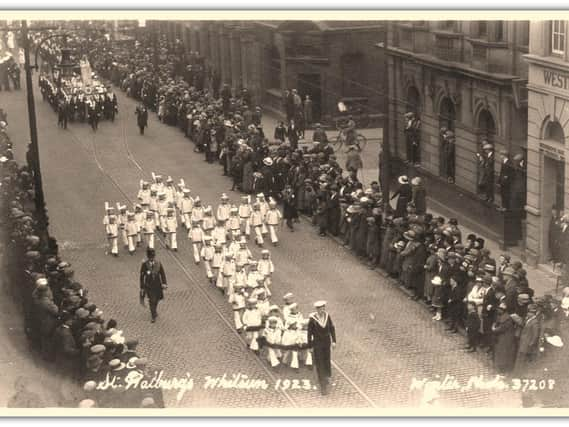

It is almost 50 years since the traditional Whitsuntide holiday, held to celebrate the feast of Pentecost, was replaced in 1971 by the fixed Spring Bank Holiday that we know today held at the end of May.
Despite that passage of time many people in Lancashire look back fondly on the Whitsuntides of the past associated with processions and pageantry, along with fairgrounds and fun. If we journey back even further to the Whitsuntide of 150 years ago in 1870 we can get a flavour of how the traditions of Whitsuntide were developing.
Advertisement
Hide AdAdvertisement
Hide AdOne scribe from the ‘Preston Chronicle’ newspaper had spent all of Whit week observing the goings on in Preston and described the scene thus, “ The weather during the week has been splendid, and thoroughly enjoyable for pleasure seekers. On Monday the streets presented a busy appearance from dawn to dusk and while the processions were passing, the crowds of onlookers were dense.
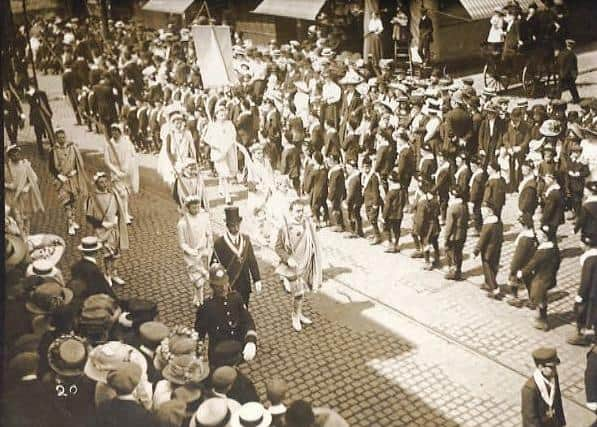

“Flags and bunting were displayed from various flagstaffs and windows in the town, and everywhere there were sounds of rejoicing. The various mills in the town had stopped production, and the principle shops and places of business were closed.
“Crowds of people from a distance were brought in by the forenoon trains, and they swelled the crowds even more. Everyone was in holiday attire, the milliners and other outfitters having had a busy time. The display of flowers and ribbons upon the ladies bonnets could have been mistaken for flower gardens.
“From Saturday there was the usual influx of shows, hobby horses, swing boats, and quack doctors, while the beggar class were represented by those infirm, lame or blind who hoped for charity from the throngs of people.”
Advertisement
Hide AdAdvertisement
Hide AdIn previous years the town centre’s Orchard had been a place where the crowds would mainly flock to the fairground attractions but on this occasion, with plans to build a Covered Market underway, it was enclosed by hoardings. Nonetheless, the traders established their enterprises on its perimeter and in the neighbouring streets.
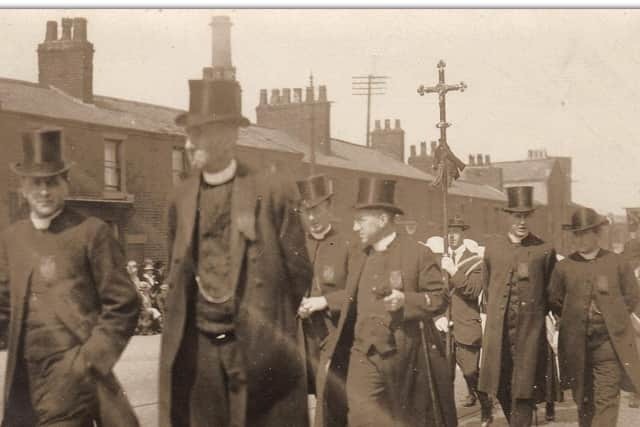

In Back Lane the Swallows Circus performers were busy displaying their equestrian skills, besides the Orchard Chapel a temporary wooden theatre had been erected where aged actors floating about the boards with recitals and renditions, further on the doorman of a tent was beseeching the crowds to enter to see the wonders of the world.
In truth there was a cavalcade of attractions including a shooting arcade, a stereoscopic gallery, a waxworks exhibition, a marionettes theatre and hall of magic and mirth. On the flagged Market Square, in front of the Gothic Town Hall opened in 1867, the two major attractions were the hobby horse and bicycle roundabouts which moved at a merry pace as they circled endlessly.
Each revolution was greeted with roars from those participating and hoots from those observing. Unfortunately, the hobby horse entertainment came to an abrupt end on the Monday evening when a portion of that merry go round fell down as a main pole snapped, sending horses and riders crashing to the ground. Miraculously, those involved had only minor bumps and bruises to report.
Advertisement
Hide AdAdvertisement
Hide AdThe curiosities also drew the crowds such as the man with the educated monkey, the one legged hymn singer and the fat lady singing of the virtues of gingerbread. Indeed, you could have a pennyworth of parched peas, hot potatoes, black puddings, candy floss and ice cream soda with vendors aplenty.
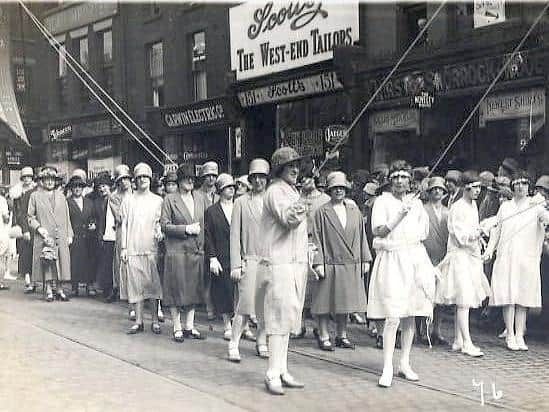

The first in procession on Whit Monday at 9am were the Loyal Orange Lodges led on their way by the Lytham Rifle Volunterers band who had woken the residents of Lytham up early that day as they marched to the Lytham railway station in tuneful melody.
Numerous Union flags were waved by participants and there was no shortage of orange and blue ribbons and flags. Plenty of banners carrying godly messages and made of silk were on display, the cords of which were generally held by girls dressed in white. Altogether more than 800 marched along the route that snaked its way through town to the Parish Church.
No sooner had that procession ended the Catholic Guilds began their march from Winckley Square along a similar route and they were led by the Guild of St Joseph’s who had the St Joseph’s brass band to accompany them.
Advertisement
Hide AdAdvertisement
Hide AdIt was close to an hour before St Wilfrid’s brought up the rear of the procession. The Guilds gave a great and artistic display of flags and banners and the participants costumes gave a profusion of colour to the scene. It was reckoned that more than 3,500 walked in procession and a cavalcade of cheering and clapping accompanied the brass band music.
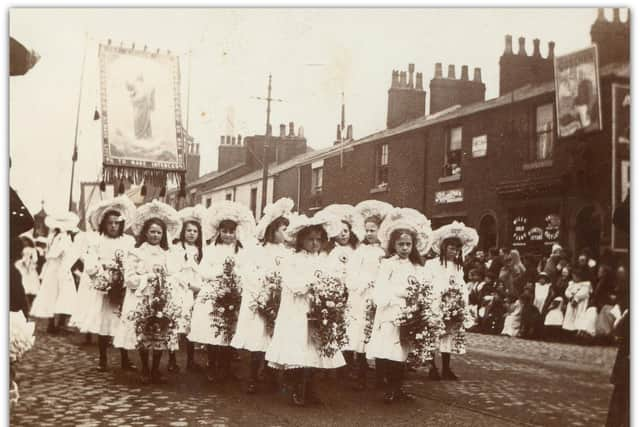

After a brief interval the Ancient Order of The Druids took to the streets. It was described as a quaint looking procession and their brethren numbered more than 300 as they got underway from Park Road, preceded by a band and a flag bearer representing their organisation. Awaiting them when they completed the walk was a sumptuous lunch at the Shooter’s Arms on Park Road where they raised a toast to their Grand Master.
By 2pm it was time for the Church of England Sunday Schools to begin their procession from the Parish Church. The scholars walked four abreast and the procession was headed by a carriage, drawn by two horses, in which the Vicar of Preston Canon John Owen Parr was proudly seated. All of the parishes made a great contribution displaying flags and banners galore and even the children from the newly opened Fulwood Workhouse were included in the parade.
At the rear of the procession were the 100 children who were scholars at the Preston Orphan School who had made their own flags which they waved with enthusiasm.
Advertisement
Hide AdAdvertisement
Hide AdWith thousands of youngsters and their teachers all smartly attired it was over two hours before the procession completed its journey.
For the children of the Dissenting Schools it was not a day for a procession, but an opportunity to have a field day. The youngsters of Fishergate Baptist Church were treated to a picnic at Ashton, the scholars of the Ragged School on Mill Hill were treated to a picnic at Whitewell with coffee and buns aplenty, and the scholars of the Lancaster Road Independant Chapel, numbering 300, were taken to a farm at Broughton were they amused themselves and enjoyed refreshments aplenty. For all the Dissenting Schools it was a day of fields day and fun.
All these processions would continue for many years into the future. The Church of England procession had begun in 1842 and the Roman Catholics had paraded since early Victorian times. It was the Loyal Orange Parade, which first took place in 1837, that became the great survivor continuing into the 1960s. Back in 1870 the participants had cause to complain when they received verbal abuse as they ventured down Friargate to the Hope Street area inhabited by many Catholics.
Despite the early hour an elderly and apparently drunken woman appeared outside the Lamb and Packet shouting obscenities at the Orangemen, who to their credit ignored her as best they could.
Advertisement
Hide AdAdvertisement
Hide AdOn Whit Monday the old Preston North Union railway station on Fishergate had been busy with an influx of visitors eager to see the processions and on the Tuesday it was the local excursionists who filled the carriages.
Day trippers setting off for Liverpool, Manchester, Llandudno, Windermere and the nearby seaside resorts of Morecambe, Fleetwood, Blackpool and Lytham on a sun soaked day. Those who stayed in Preston had plenty to occupy their time Preston.
The relatively new Avenham, Miller and Moor Parks had plenty of visitors and there were no shortage of brass bands with a contest being held.
The Whitsuntide of 1870 had continued the traditions of old and brought together the communities of the various faiths leaving a legacy that would be built on in the future. The population of 85,000 included many a priest, preacher and parson and they had gathered their congregations together once more to parade through the Preston streets.